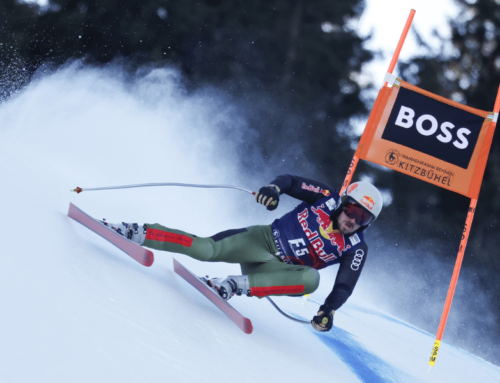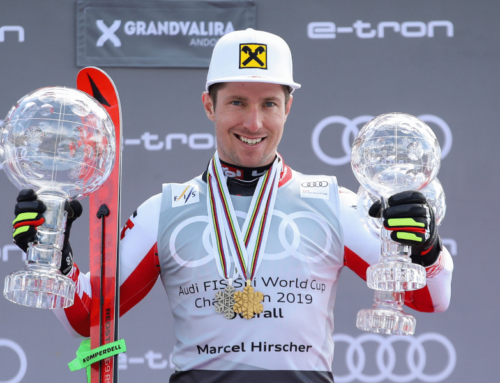Okay, Kids, Who Fartleked?
Photo: ELITEAM
Maximize your physiological window of opportunity this summer with high intensity, high variability, high fun factor workouts.
For ski racers, summer is all about physically building (or rebuilding) without the stress of competition. Elite athletes balance time at on-snow camps while following customized training programs. They can also leverage their experience to train optimally, exploiting their strengths and improving their weaknesses.
But what if you can’t get on snow? What if you don’t have a trainer, a program or a fancy gym? Especially for kids who are not getting on skis or not getting on skis much, summer is an excellent opportunity to make substantial physical gains, uninterrupted by the stress of travel or the need to manage energy for quality hours on snow.

As luck would have it, the type of training most critical for teenage athletes aspiring to the elite level can be found right out your front door. It involves the specific type of training that should be done when athletes are young. Even better, this type of workout is a word that every teenager loves to say: Fartlek.
Window of Fitness Opportunity
We can thank the Swedes for coming up with this term for “speed play.” The fartlek training method blends endurance with interval training. And addresses the specific physiological gains that teenage athletes have a unique window of opportunity to exploit.
US Ski Team Director of Alpine Sports Science Per Lundstam points out that today’s top US Ski Team tech athletes are fast and explosive, allowing them to jump very high and change direction quickly. “We are seeing that athletes need to be very fast, explosive, and ‘elastic’ when they are in their late teens,” says Lundstam. “Athletes can continue to develop aerobic endurance and capillarization of the muscle from the late teens and into their late 20s. But changing the plasticity, elasticity, and explosive output is tough as they age.” That means athletes through their late teens need to do a lot of explosive, dynamic, and speed work to maximize their ultimate athletic potential.
The fartlek training method does just that by challenging the body to adapt to various speeds, conditioning you to become faster over longer distances. Most aerobic/anaerobic workouts are either long endurance efforts at a steady pace or target two paces—effort and recovery. Fartlek workouts, whether indoors or outside, on foot, bike, or on the water, involve varying your pace throughout your workout.
Designing Your Fartlek Workout
Compared to interval training, your top speed might not be as fast. But your overall average heart rate should be higher because your heart rate does not drop as low during recovery periods. Structure the workouts with a specific time or distance intervals for sprinting and recovery. Or use the classic fartlek training created on the fly—jogging, accelerating, sprinting, or walking at various landmarks. Beyond the physical benefits, fartlek training—by setting many goals and targets in each workout—helps build the mental strength and willpower needed for sustained and repeated efforts..
Lundstam suggests “finding cool little courses and playing around with nature.” That can be a hill or a wooded area. Then use a creative mindset to find your way over, around, and through obstacles like rocks, tree trunks and terrain changes. You accelerate for 30-40 seconds, settle back into a rhythmic pace, then accelerate again. “That’s a nice way of getting both the aerobic endurance and the explosive side and anticipatory agility. Mountain biking is also phenomenal for our group of athletes. It covers the continuum of different energy systems, and then you have that coordinated aspect to it and how you move and work with forces.” Lundstam adds that games like soccer and basketball are also great for developing fitness in young athletes because they involve coordination, acceleration and directional changes in a dynamic and fun environment.

“It’s really important that athletes play games and have fun with soccer, basketball and activities like that. But then they need to also do jumping and sprint work in parallel to develop that elasticity and speed that they need.”
Low Tech and High Return
The beauty of the fartlek training method is that it is low-tech and can be used anywhere. Think Daron Rahlves bounding up the granite boulder field of Donner Pass with a weighted backpack. Or Bode Miller doing intervals pushing his tennis court roller. Or Janica Kostelic sprinting up Croatia’s rocky coastline.
ELITEAM creator Doug Lewis has been educating and motivating young athletes ages U12-U18 for over 30 years and is the master of low-tech training. His workouts focus on agility, explosiveness and coordination. They utilize gallon water jugs, rocks, obstacles in the woods and really whatever can be pushed, pulled, thrown or jumped over. The only mandatory piece of equipment kids need for his camps is a rock that weighs their age in pounds. “Until you’re through U16, just learning the form and using body weight, or maybe adding your rock, is all you need.” The longer athletes can focus on technique, form and fun, he explains, the better set up for success they will be for the rest of their lives in the weight room.
Creating a Library of Moves
As Lewis explains to kids at his camp and in his Dig Deep workouts, “As an athlete, you want to have a library of moves, and the bigger your library of moves, the better.” He runs though scenarios that might happen in any one day on the hill: “You’re going to come into a flush that has a hole in it, or there’s a gatekeeper in the way and a bird flies in front of you…you’re going to have to do this move that you’ve never even thought of. But if you have these moves in your library, you can create that move.”
Here, Lewis shares some of his picks for training that incorporate speed and agility:
Obstacle Courses:
You can create fun obstacle courses with lots of equipment or with hardly any—it is all about creativity and preparation. When setting them up for a group, he says, “ALWAYS set a dual!” Adding the element of head-to-head competition amps energy and motivation, reduces waiting time and lets kids watch and learn from each other.
Fartlek on the Trails:
Set your watch to every 3 or 4 minutes. Jog (slow enough to talk), and when the timer goes off sprint the trail for 10-30 seconds. Recover with a slow jog.
Hill Sprint Chases:
Teams of two take turns chasing each other up a 10-15 second grassy hill (or a road if you have to). The athlete in front has a 15-foot lead and on “go” both sprint to the top/finish with the athlete behind trying to catch the front one. Switch leaders after each sprint, jogging back down to recover between.
Ski Lift Fartlek:
Grab a buddy or five and head to your local ski hill. Find the flattest and easiest trail/slope that has a lift running up it. Start at the bottom lift shack or lift tower and sprint for 15-20 seconds and then slow to a walk/hike pace. At the next lift tower, sprint again for 15-20 seconds and continue the pattern to the top. You get a great, competitive workout AND a view from the top and you are using the Fartlek training method.
###
For more ideas and a summer’s worth of detailed weekly workouts to follow, go to https://digdeep.eliteam.com/
Whatever your summer plans, hopefully when you head back to school and someone asks, “Who fartleked?” you’ll raise your hand.





















